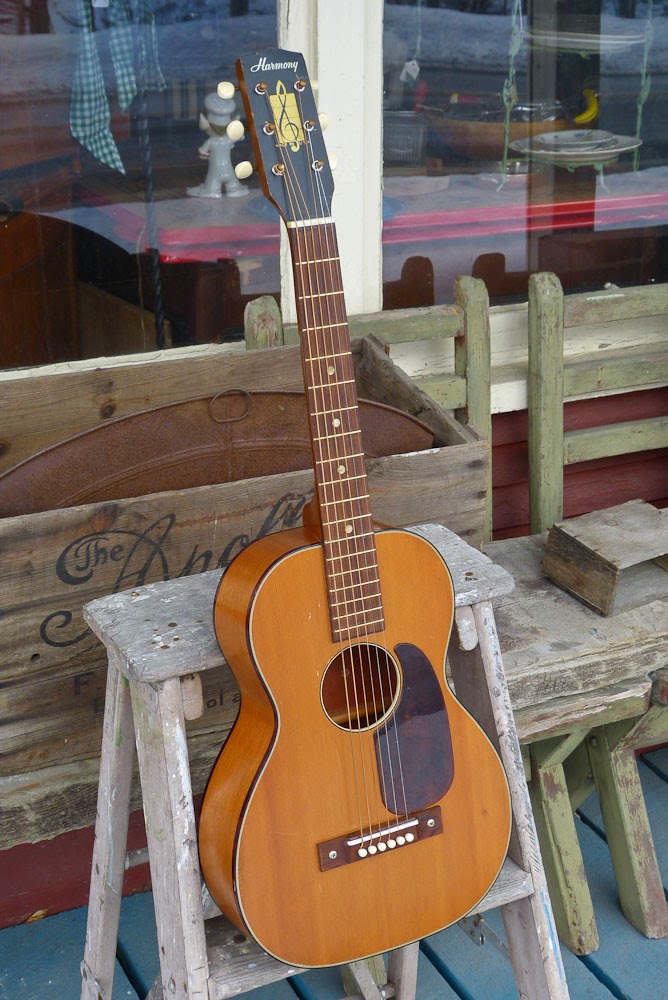1970 Harmony H-162 3/4 Terz Guitar
3/4-size Harmony guitars are far less common than their full size variants. This is simply stamped H162 inside but a glance at the scale length and body size (Martin "size 5" equivalent) makes this the H162-3/4 model. It's essentially a "terz" guitar with a 22" scale and, personally, I think that's what they're best used for: tuning up from E to E to G to G or A to A or using "Nashville" re-entrant tuning. Still, as a mini travel guitar, it puts out a decent sound.
Like its bigger cousin the "regular" H162, this one is ladder-braced and has a solid spruce top with solid mahogany back and sides. The board and bridge are both rosewood and the build is sturdy and practical. My work on this included a neck reset, fretboard extension reglue, fret level/dress, new bone saddle (and recut of the saddle slot) and general setup. It plays spot-on and much more in tune thanks to a bigger, compensated saddle. This is a customer's instrument.
Like its bigger cousin the "regular" H162, this one is ladder-braced and has a solid spruce top with solid mahogany back and sides. The board and bridge are both rosewood and the build is sturdy and practical. My work on this included a neck reset, fretboard extension reglue, fret level/dress, new bone saddle (and recut of the saddle slot) and general setup. It plays spot-on and much more in tune thanks to a bigger, compensated saddle. This is a customer's instrument.
This guitar has luckily survived with no cracks.
It's funny to think that in 1970 Harmony was still making these guitars which looked unchanged since the late 50s.
Brass frets and faux-pearl dots.
There's no doubt that the factory bolts helped keep this bridge glued tight.
I lucked out with having to recut the saddle slot... I didn't have to reangle it but just had to widen it. One can thank Harmony for gluing the bridge ever-so-slightly on an angle in the first place. I had enough room on the saddle width to compensate an edge on the saddle top, itself.
These light-gauge strings (54w-12) don't really do the guitar 100% justice tuned E to E at this scale length. Usually I suggest medium (56w-13) for "standard" tuning on a terz-size instrument as it compensates for the low tension difference of the shorter scale.
Both the top and back edges are bound in tortoise-style plastic.
Yup, it's a cute little thing. I so wanna hear it strung-up Nashville style, though. I bet it'd be a sweet little "chimer," then.












Comments
condition, no cracks just a little normal wear.